Decommissioning contractor for aging assets in Australia: Navigating complexities and best practice.
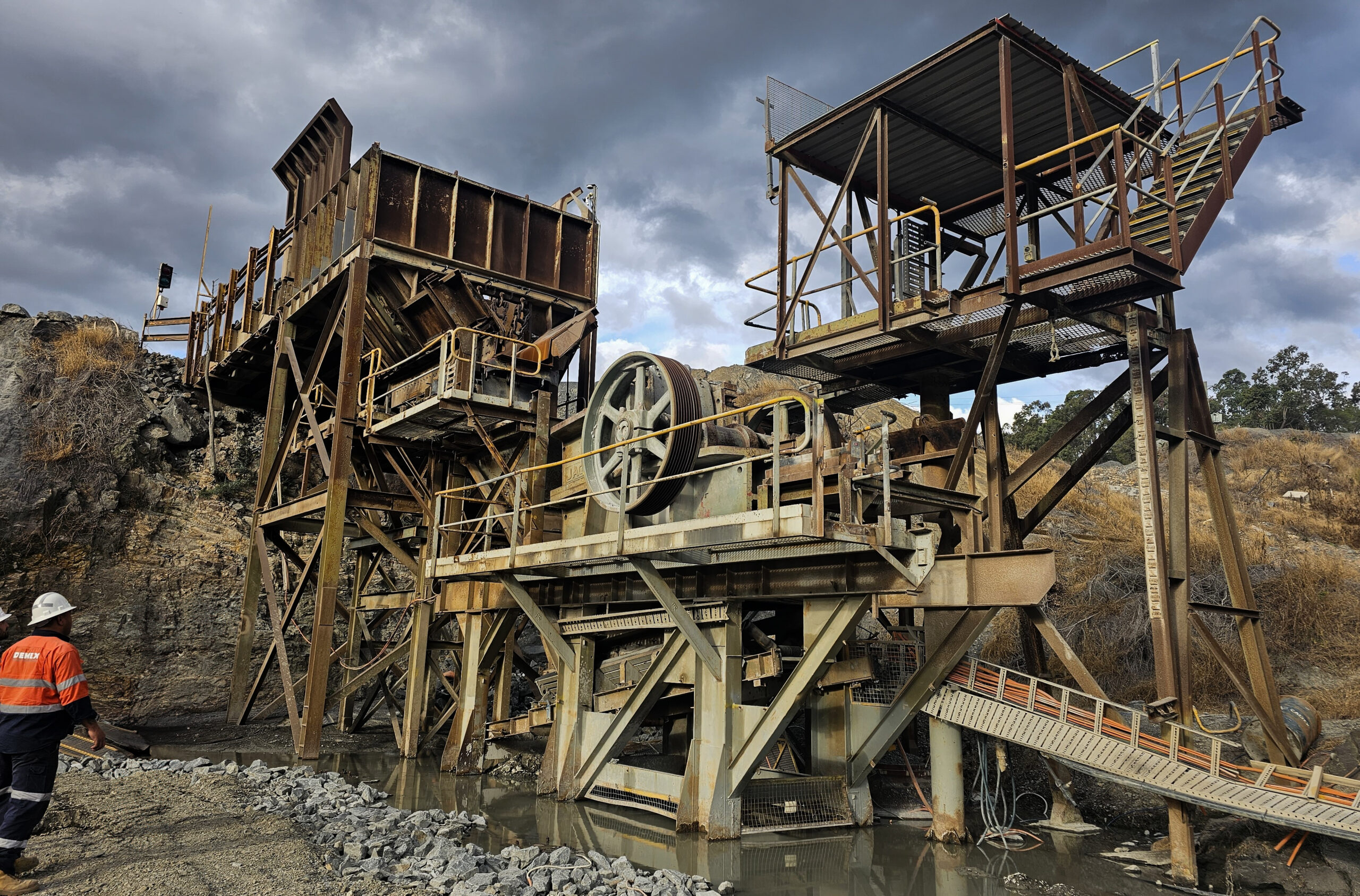
As industrial, energy, and manufacturing assets reach the end of their operational life, decommissioning becomes an essential, yet complex process. Aging infrastructure, such as manufacturing plants, mine sites, and power stations, must be decommissioned to prevent safety hazards, reduce environmental risks, and effectively manage ongoing maintenance costs. For asset owners, understanding the intricacies of decommissioning is key to ensuring both safety and compliance, while minimizing costs and project delays.
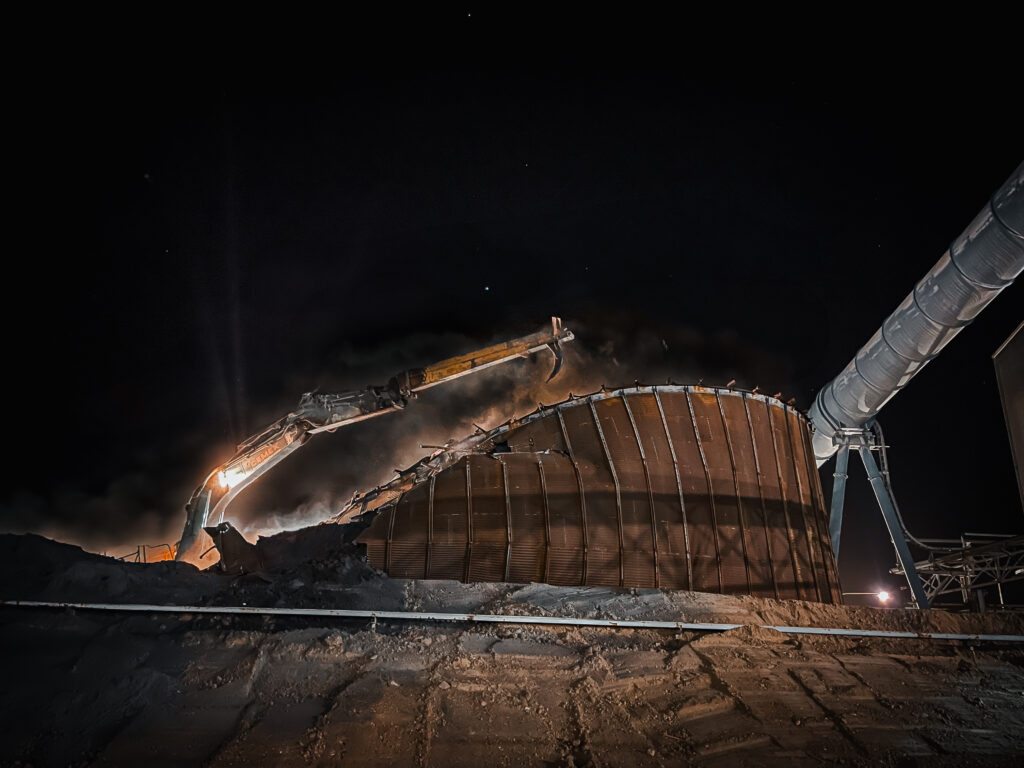
>>> Find out how DEMEX undertook the demolition of five aging tanks at QAL’s alumina smelter
Understanding the challenges of aging infrastructure
Aging infrastructure often brings significant challenges. Corrosion, contamination, and deterioration are common issues that can complicate the decommissioning process. In many cases, original documentation for these facilities is either incomplete or missing altogether, making it difficult to fully assess the risks involved. The presence of hazardous materials, such as asbestos or chemicals, may not be immediately apparent, further complicating planning efforts.
Without proper assessment and careful planning, decommissioning projects can face unforeseen hurdles, including cost overruns, environmental violations, and safety concerns. Recognizing these challenges early in the process is crucial for asset owners to avoid delays and unnecessary or unexpected costs.
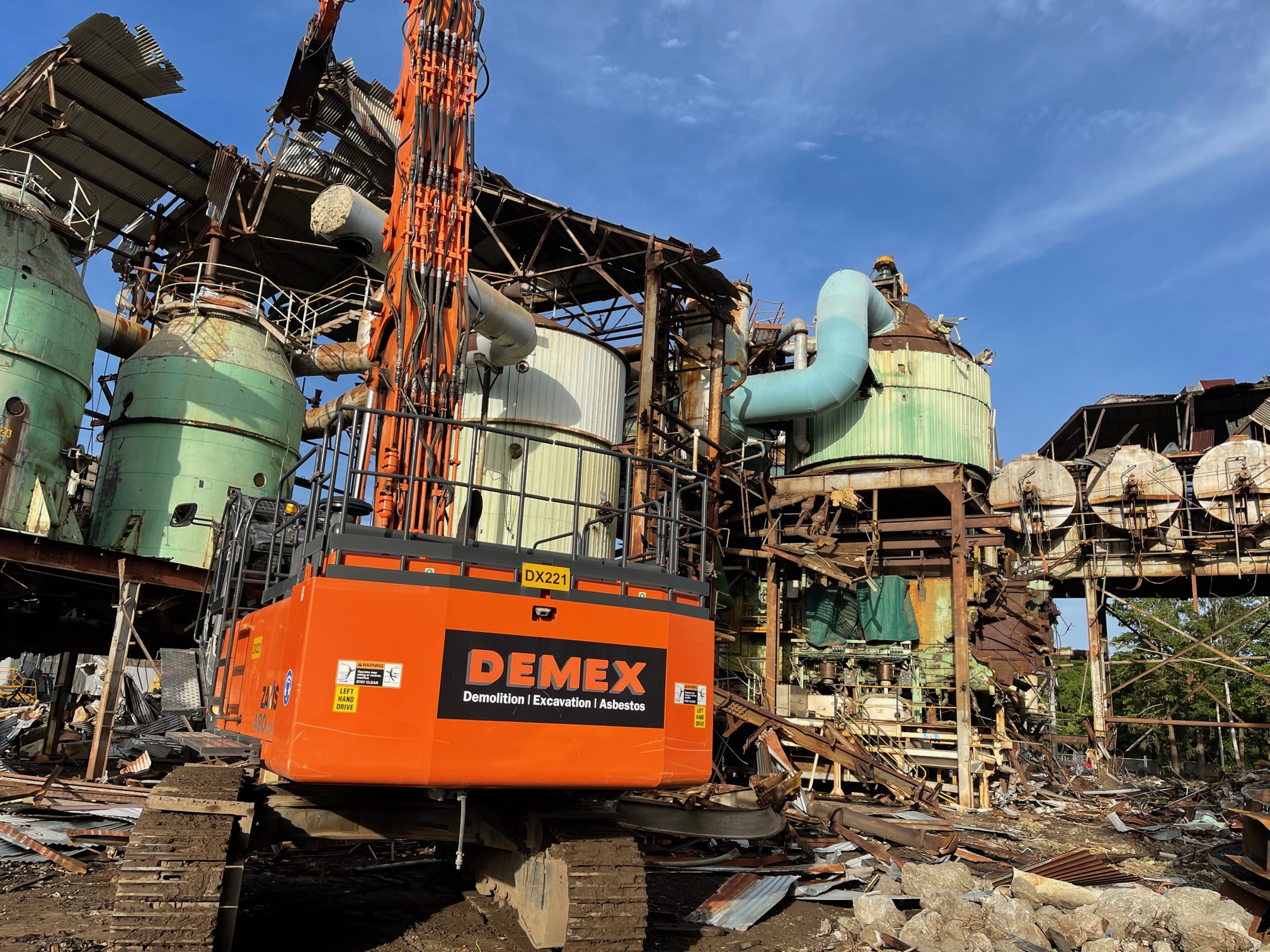
>>> Read about the decommissioning and demolition of an industrial mill in North Queensland
Sharing solutions: How asset owners and decommissioning contractors can work together
Asset owners understand operations but are less familiar with the complexities of asset decommissioning and site closure. For projects involving large-scale industrial facilities, power plants, or mine sites, working with a specialist decommissioning contractor can make a significant difference to project planning and delivery, as well as closure outcomes. Contractors with extensive experience in this field bring knowledge of both the technical requirements and regulatory obligations involved in dismantling complex infrastructure.
Involving specialist contractors at early planning stages for decommissioning can reduce costs, risks, and liabilities, and improve asset owner, community, and regulatory confidence.
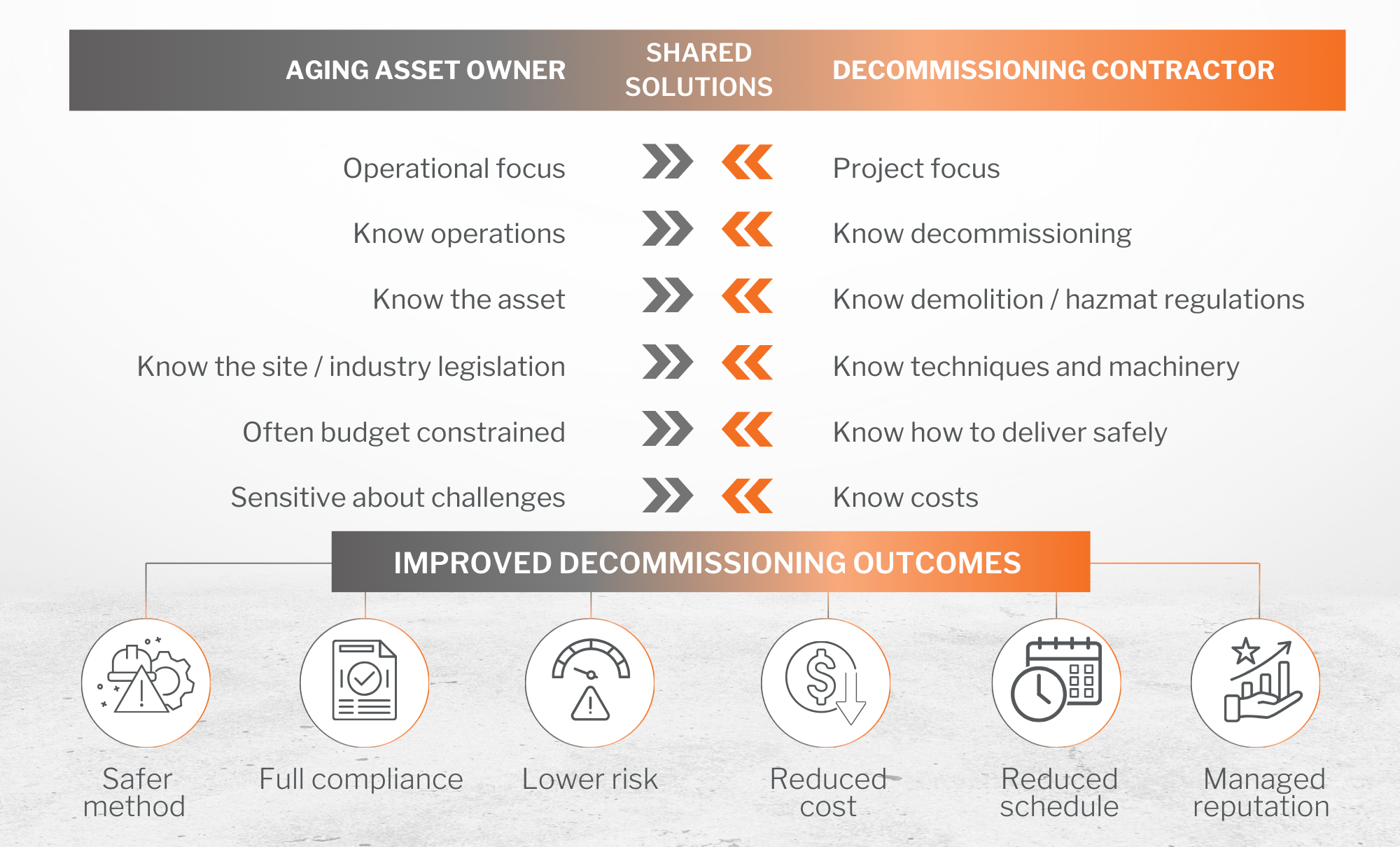
A phased approach to decommissioning: Why it matters
The process of decommissioning aging assets often takes place over several stages, each requiring careful coordination between asset owners and contractors.
- Planning and Design Phase: Early involvement of a decommissioning contractor during the design phase can ensure more accurate cost estimates and help asset owners allocate adequate resources for closure. By engaging specialists early, project teams can also plan for the safe removal and disposal of hazardous materials.
- Operational Phase: Throughout the operational life of an asset, progressive closure strategies can be developed to ease the transition to decommissioning. These strategies might include creating detailed demolition estimates that are periodically updated to reflect cost changes.
- Decommissioning Phase: Once operations cease, the contractor will carry out the actual demolition, dismantling, and site remediation. This stage often involves coordinating multiple activities, such as the safe removal of hazardous materials, disassembly of large structures, and preparation of the site for future use or restoration.
- Post-Closure Analysis: After a decommissioning project is completed, asset owners can collaborate with contractors to evaluate the process. Lessons learned from previous projects can inform future closures, helping to improve cost efficiency and risk management.
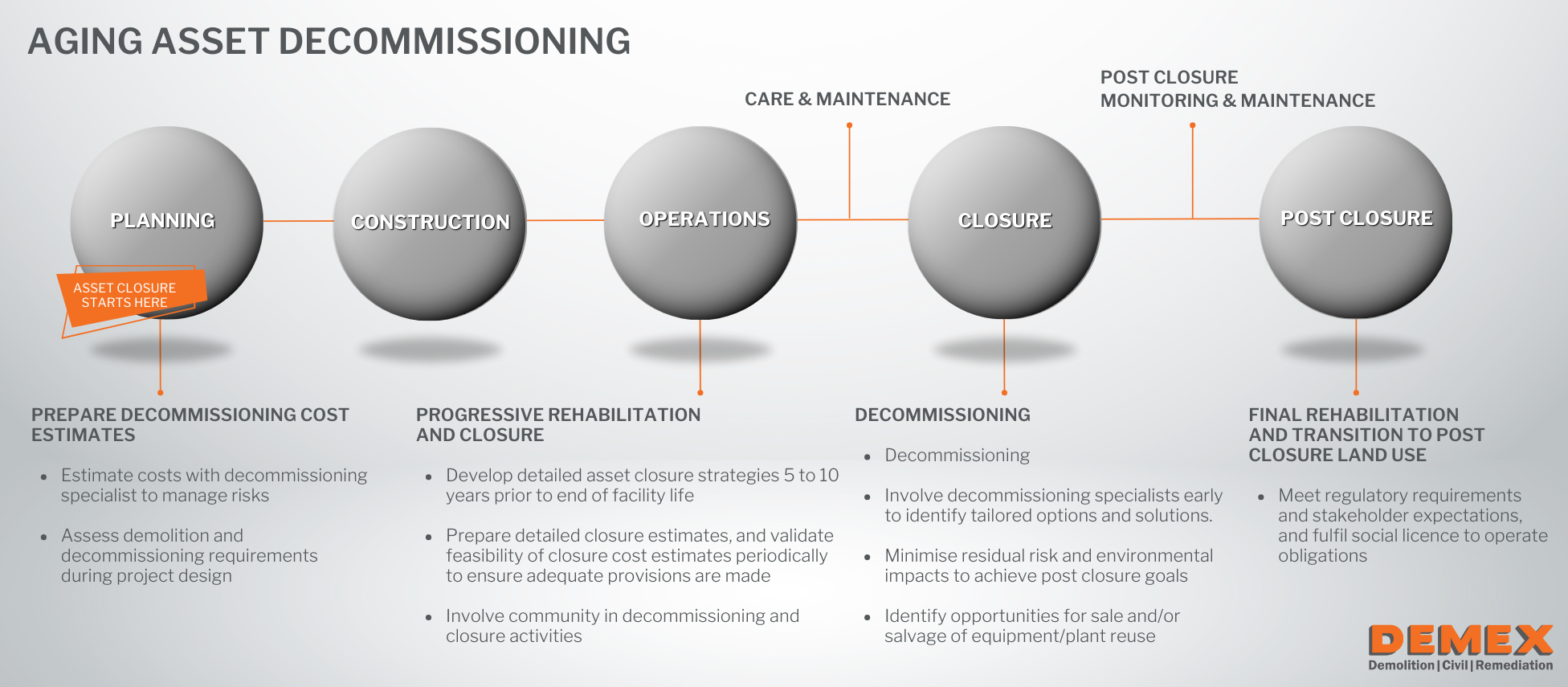
Decommissioning aging assets is a complex, multifaceted process that requires careful planning and specialised expertise. Understanding the challenges of deteriorating infrastructure, accurately estimating costs, and adhering to environmental and safety regulations are all critical to ensuring a successful project outcome.
By collaborating with experienced decommissioning specialists, asset owners can navigate the intricacies of dismantling, demolition, and site remediation, ultimately achieving a safe, efficient, and compliant closure.
For more information about how we can assist with decommissioning of aging assets, contact us at BD@demex.com.au.


